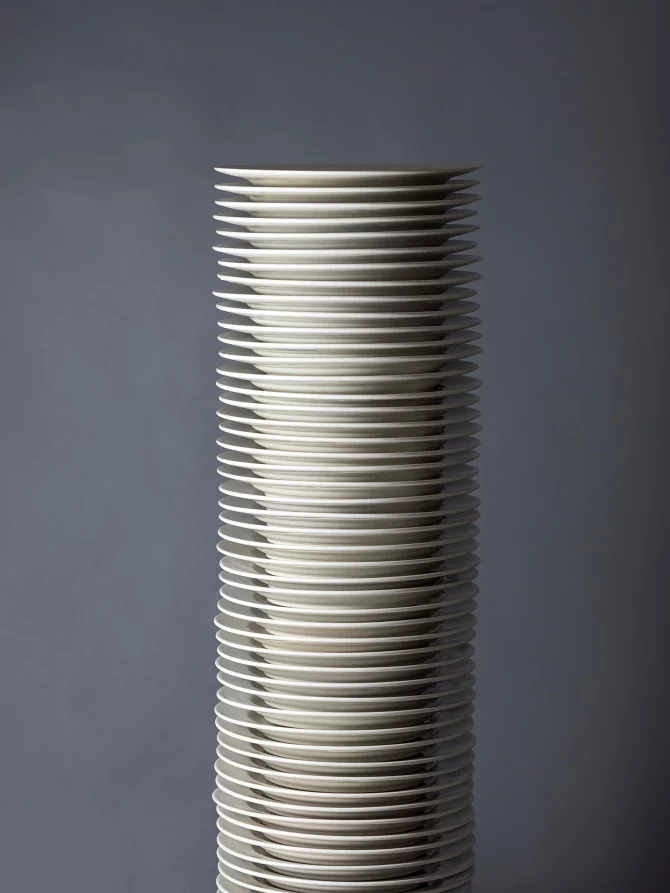Among the themes that largely define the work of contemporary artists today, there are broader issues such as cultural identity, mechanisms of the state, gender theories, cultural and social memory, or ideology.
These concepts are highly contemporary, yet they have been also thought about tirelessly in the past. As their work become invested in conceptual analysis and reflections on these forms of thought, they construct along the way margins of discourse based on the everyday as much as social and historical references. Manolya Çelikler is also one of those artists, who employ theoretical and historical references as a point of departure.
Çelikler’s practice features an idiosyncratic use of materials and sensitive approach to the above mentioned concepts. Yet, it is her specific treatment of the material what provides the basis of expression for the issues she wants to shed light on, and thoroughly analyze, in her narrative. As a primary language, the artists turns to fabrics, sometimes threads, sometimes found objects or ceramics. In this solo exhibition at Pg Art Gallery, where she deploys her analytical gaze, Manolya Çelikler relies on ceramics and white clay, some of the most ancient tools of material history. In these works, ceramics, found in every culture in the world both long before and after art, she develops gestures to disrupt the conventional perception of the material. Çelikler turns to the intrinsic qualities of clay, in order to relocate and amplify its meaning: The ceramic handcuffs offer us a critique of power mechanisms. These white and fragile handcuffs made from ceramic, not only serve the purpose of looking at ideological concepts around freedom of speech but also function as a counter-metaphor against the established order.
In “The Column”, Manolya Çelikler undertakes an investigation which is simultaneously art historical, ideological and gender-oriented. She re-constructs the obelisk form, a means of propaganda invented by the Romans since the times of Emperor Constantine to glory the emperor’s lasting power, constructed from ceramic floral plates with a hole in the center. From a gender perspective, the column ascending into the sky and eternity, represents the male discourse in its phallic form, and it is here confined to a delimited space and rendered very fragile. As a critical intervention on the relationship between form and ideology, “The Column” invites us to reflect on the implications of the triad space/material/form.
As a search for meaning against the current mechanisms of power that are now more wholly encompassing than ever before, Manolya Çelikler’s solo exhibition is an attempt to disrupt traditional ways of looking.
Esra Aliçavuşoğlu

